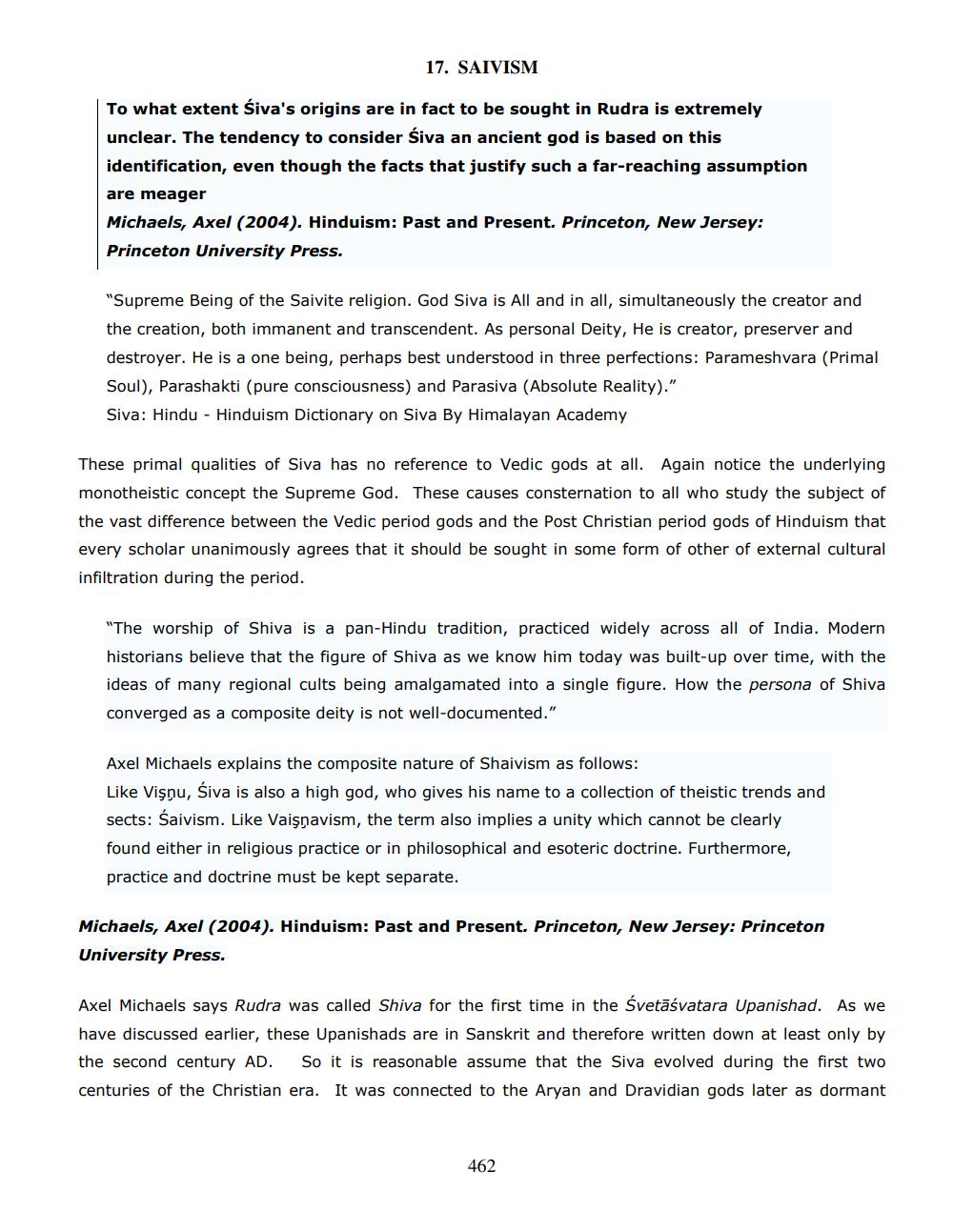________________
17. SAIVISM
To what extent Śiva's origins are in fact to be sought in Rudra is extremely unclear. The tendency to consider Śiva an ancient god is based on this identification, even though the facts that justify such a far-reaching assumption are meager
Michaels, Axel (2004). Hinduism: Past and Present. Princeton, New Jersey: Princeton University Press.
"Supreme Being of the Saivite religion. God Siva is All and in all, simultaneously the creator and the creation, both immanent and transcendent. As personal Deity, He is creator, preserver and destroyer. He is a one being, perhaps best understood in three perfections: Parameshvara (Primal Soul), Parashakti (pure consciousness) and Parasiva (Absolute Reality)."
Siva: Hindu - Hinduism Dictionary on Siva By Himalayan Academy
These primal qualities of Siva has no reference to Vedic gods at all. Again notice the underlying monotheistic concept the Supreme God. These causes consternation to all who study the subject of the vast difference between the Vedic period gods and the Post Christian period gods of Hinduism that every scholar unanimously agrees that it should be sought in some form of other of external cultural infiltration during the period.
"The worship of Shiva is a pan-Hindu tradition, practiced widely across all of India. Modern historians believe that the figure of Shiva as we know him today was built-up over time, with the ideas of many regional cults being amalgamated into a single figure. How the persona of Shiva converged as a composite deity is not well-documented."
Axel Michaels explains the composite nature of Shaivism as follows:
Like Vişņu, Śiva is also a high god, who gives his name to a collection of theistic trends and sects: Śaivism. Like Vaisnavism, the term also implies a unity which cannot be clearly found either in religious practice or in philosophical and esoteric doctrine. Furthermore, practice and doctrine must be kept separate.
Michaels, Axel (2004). Hinduism: Past and Present. Princeton, New Jersey: Princeton University Press.
Axel Michaels says Rudra was called Shiva for the first time in the Svetāśvatara Upanishad. As we have discussed earlier, these Upanishads are in Sanskrit and therefore written down at least only by the second century AD. So it is reasonable assume that the Siva evolved during the first two centuries of the Christian era. It was connected to the Aryan and Dravidian gods later as dormant
462




